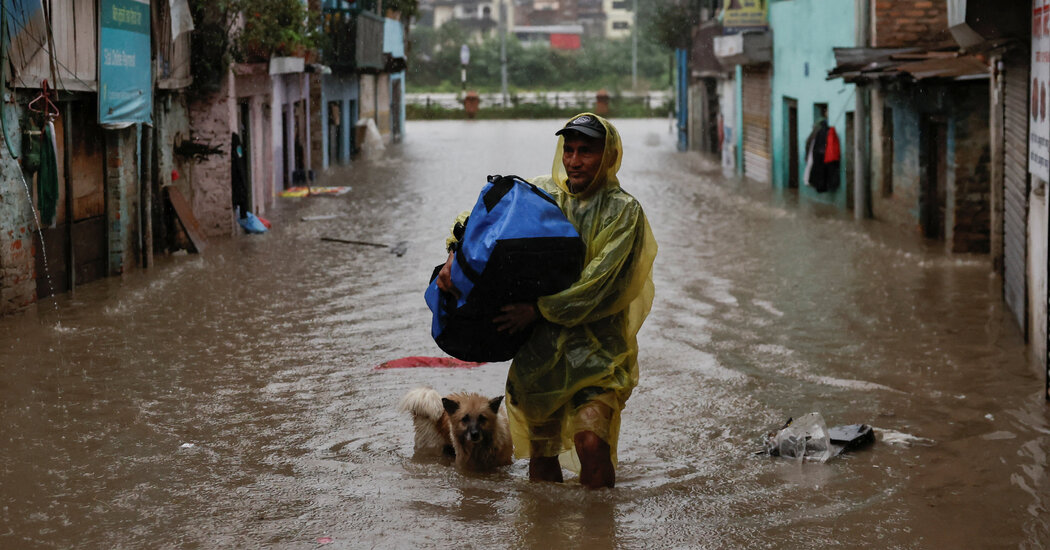Landslides and floods set off by incessant rainfall have killed at least 38 people in Nepal, officials said on Sunday, adding to the woes of an interim government struggling to find its footing after violent protests deposed its predecessor.
The highways connecting the federal capital, Kathmandu, with the rest of the country have been obstructed since Saturday morning, and flights have been disrupted, police officials said.
The transportation nightmare has stranded a large number of people who are returning to the capital at the end of Dashain, the biggest Hindu festival. The government closed offices on Sunday, which is a working day in Nepal, and Monday, indicating the gravity of the situation.
Officials said the death toll could rise. Nepal’s army mobilized troops and helicopters and was carrying out rescue operations in over two dozen locations, it said in a statement on Sunday.
At least 36 people were killed after landslides swept away houses in Koshi Province, in the country’s southeast, and at least two others were killed in floods, according to Kalidas Dhaubaji, the spokesman for Nepal’s Armed Police Force. At least 11, including four trekkers on the famous Langtang route, were still missing, he said.
In addition to Koshi, the central provinces of Bagmati and Madhesh were heavily affected by the intense rainfall that started on Friday night. The security agencies also evacuated dozens of people living in slums along river banks in the Kathmandu Valley as the overflowing rivers entered the settlements.
The rainfall stopped in the central provinces on Sunday morning, but it continued in eastern parts of the country.
Heavy rains also wreaked havoc in neighboring India. In the state of Bihar, which borders Nepal, officials said floods and lightning had killed at least 10 people and injured 13. Much of the state was under an emergency alert as rivers were swollen, and citizens were advised to stay away from low-lying areas.
In Darjeeling, in the Indian state of West Bengal, at least 20 people were killed in a cyclone, according to Harsh V. Shringla, a lawmaker from the state.
“Areas across the hills have been cut off, and roads destroyed,” Mr. Shringla said on social media. “This has disrupted normal life and caused considerable hardship to many.”
In Nepal, a small Himalayan nation that is highly prone to natural disasters, rain-induced disasters claim hundreds of lives and inflict huge damage to properties every year. But the disaster on Sunday comes as the country’s infrastructure and response mechanisms are particularly unstable, following a daunting political transition.
Violent protests over entrenched corruption and economic stagnation last month toppled the government and damaged many government offices.
Prime Minister Sushila Karki, who leads the interim government, urged the public in a brief video message to avoid commuting unless it was an emergency.
Ms. Karki, 73, a retired Supreme Court justice, was tapped by the protesters to lead the interim government and help change a system they saw as long exploited by a few elite political families. She has been trying to complete her cabinet appointments and clean up government buildings that were burned and ransacked, and she has called for elections to be held early next year.
Mujib Mashal and Suhasini Raj contributed reporting.
The post Floods and Landslides in Nepal Worsen Woes of a Nation in Flux appeared first on New York Times.




